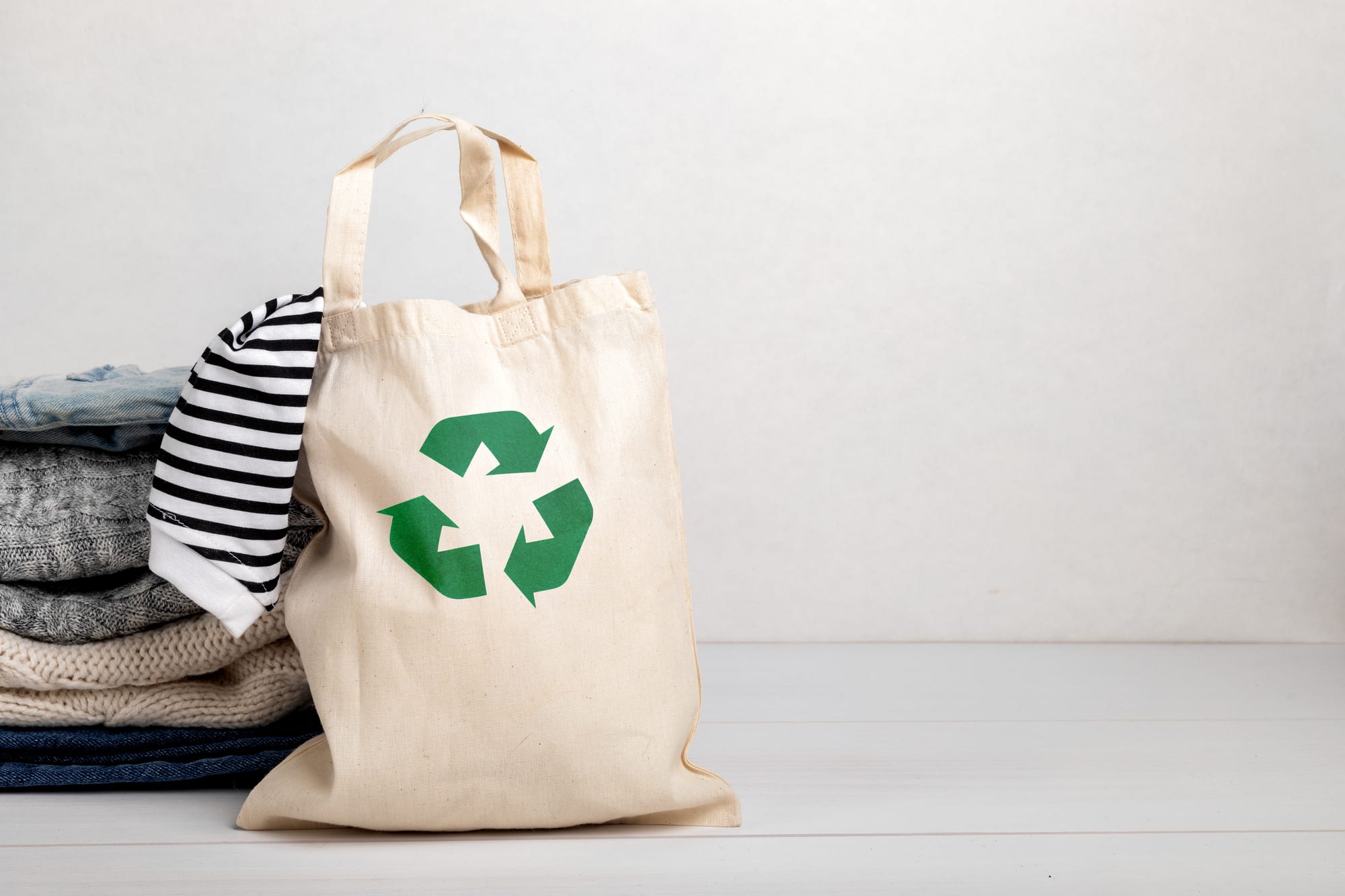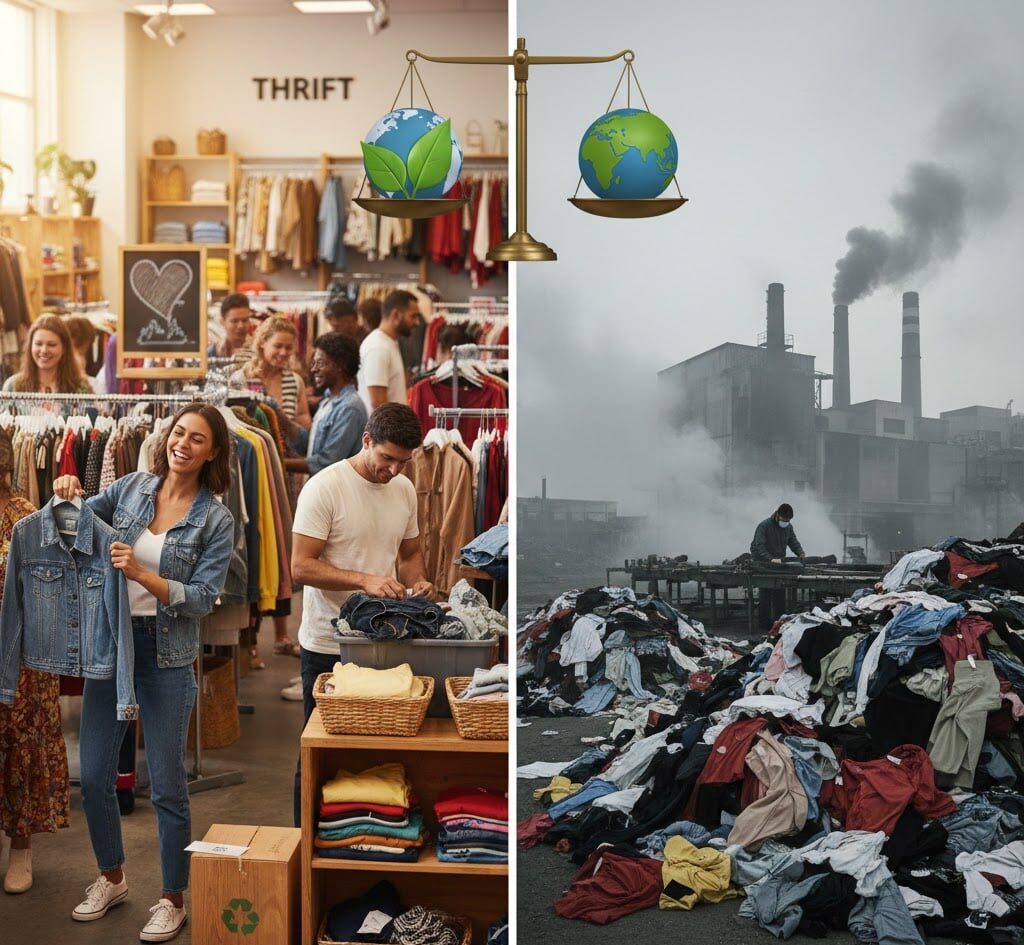
In today’s world, where fast fashion dominates the clothing industry, it’s easy to get caught up in the cycle of buying new clothes and discarding them after a few wears. However, there’s a growing movement that’s challenging this unsustainable practice: thrifting. “The Sustainability of Thrifting: How Secondhand Shopping Reduces Your Environmental Impact” is a concept that’s gaining traction among eco-conscious consumers who want to make a difference.
Thrifting, or buying secondhand clothing, is not only a great way to save money but also has a significant positive impact on the environment. By choosing to shop at thrift stores, you’re actively reducing the demand for new clothing production, which in turn decreases the carbon footprint of the fashion industry. The sustainability of thrifting is a powerful tool in the fight against environmental degradation.
The Environmental Impact of Fast Fashion
Fast fashion, characterized by rapid production, low-cost clothing, and quick turnover of trends, has become a significant segment of the fashion industry. However, its environmental impact is substantial, affecting various aspects of our planet. Here’s an overview of the primary environmental issues associated with fast fashion:
Water Use and Chemical Run-off
Fast fashion’s rapid rise in popularity has exacted a hidden cost on our planet’s well-being. With the average garment being worn mere times before being discarded, our cotton-growing habits have left a dirty mark on the environment. Chemical pesticides, for instance, are threatening the health of our soil and contributing to the stark reality of water pollution. It’s crystal clear that our craving for conformity – and constant novelty – has led us down a precarious path.
Carbon Emissions
Fast fashion relies heavily on synthetic fibers like polyester, which are derived from petroleum. The production of these fibers is energy-intensive and contributes to fossil fuel depletion.
The energy used in the production, transportation, and distribution of clothing adds to the overall carbon footprint.
Plastic Pollution
Fabrics made from plastic fibers are widespread in modern clothing, but their slow decay raises concern. Polyester, nylon, and acrylic blend releases can literally linger for centuries in landfills.
Washing synthetic garments also releases microplastics into waterways. Embracing secondhand shopping and natural fibers can help reduce plastic pollution from clothing.
How Thrifting Supports Sustainable Fashion
Thrifting offers an eco-friendly approach to fashion by supporting sustainable practices and reducing the environmental impact of clothing production and consumption.
Reducing Demand for New Clothing Production
The cornerstone of sustainable living, thrift shopping challenges the throwaway culture of the retail world. It diverts waste from overflowing landfills and the dreaded ozone sinkholes of neglected products buried deep within oceans. Thrift shopping gives our consciences a reprive, exchanging cheap fashion fantasies for earthy certainties.
Supporting Local Communities
Across our nation’s thrift stores, often-overlooked treasures await discovery. These secondhand destinations offer not only a respite from mainstream consumerism but also a chance to make a positive impact on the environment – and let’s not forget the wonderful people working tirelessly behind the scenes.
Red Racks Thrift Store, in partnership with Disabled American Veterans (DAV), channels the proceeds from sales to support veterans in their transition back to civilian life. This support includes medical care, job training programs, housing assistance, and other essential resources. By donating clothes at Red Racks Thrift Store locations or DAV donation bins around the Kansas City metro area, you’re not just decluttering – you’re making a real difference in the lives of those who have served our country.
Extending the Life of Garments
The thrifting game is a straightforward, eco-engineered winner in this tug-of-war between our coveted designer duds and environmental integrity. Yes, fashion must adapt to breathe new life into timeless fashion pieces instead of drowning the oceans and polluting planet Earth, one disposable fast fashion buy-and-get-ready.
Thrifted finds can be worn as-is, repaired, or upcycled into new garments, extending the life of each piece.
The Sustainability of Thrifting: How Secondhand Shopping Reduces Your Environmental Impact
Sixty-nine percent of the global population believes that sustainability starts with the individual. They’re picking up pens, not pace notes; influencing habits, not Instagram impressions. The everyday person with an increased awareness of carbon emissions believes in taking action – simply by tweaking their own routines. And sometimes, it’s as simple as opting for a bag with labels carrying their very own brand.
Decreased Resource Consumption
Thrifting significantly reduces resource consumption, offering an eco-friendly alternative to traditional shopping. By purchasing second-hand items, you contribute to lowering the demand for new products, which in turn reduces the extraction of raw materials, energy usage, and waste generation associated with manufacturing.
Thrift stores often extend the lifecycle of goods, minimizing the environmental impact of production and disposal. This not only conserves natural resources but also helps mitigate pollution and reduces your overall carbon footprint. Embracing thrifting supports a more sustainable lifestyle and promotes responsible consumption practices, making a positive difference for both the planet and your wallet.
Reduced Textile Waste
The fast fashion cycle encourages consumers to view clothing as disposable, leading to massive amounts of textile waste in landfills. Thrifting diverts clothing from landfills and reduces waste by keeping garments in use.
Buying secondhand also decreases the demand for new clothing production, minimizing the amount of textile waste generated.
The Role of Consumer Habits in Driving Sustainable Change
Tired of feeling ripped off by fast fashion’s ill-advised efforts to reconcile quality with speed? Join the movement towards the right side of fashion – by adopting secondhand shopping and advocating for eco-friendly practices, we can collectively steer the course of this sprawling industry towards a more responsible one.
Shifting Mindsets Towards Secondhand Shopping
Fashion’s conscious awakening begins with a swipe of secondhand shopping savvy. By valuing the revitalized charm of pre-loved pieces, we’re stepping away from fast fashion’s suffocating grip. This shift speaks volumes to the industry: sustainability is no longer a novelty, it’s the new standard.
A trip to the thrift store has less to do with frugality and more to do with the artistic side of shopping. Besides indulging in retail therapy, the real thrill lies in stumbling upon hidden gems in the unlikeliest of places. Challenge yourself to reteach your brain to prioritize appreciation over immediate gratification.
Embracing Repair and Upcycling
In addition to shopping secondhand, learning to repair and upcycle clothing can further reduce waste. Mending minor damages, altering garments for a better fit, and repurposing old items into new creations all extend the life of our clothes.
Embracing a “make do and mend” mentality can significantly decrease our environmental impact.
Tips for Eco-Conscious Thrifting
Inspired to make a positive ecological impact, those selecting thrifted garments wisely opt to follow our thrifting tips meant to reduce the already environmentally friendly approach to shopping even further.
Prioritizing Quality and Durability
In the world of thrift shopping, the goal is to find steals that will endure. To uncover these hidden gems, examine the seams, and watch for any signs of wear.
Donating or Repurposing Unwanted Items
When you have clothing that no longer serves you, consider donating it to a local thrift store or charity. Ensure items are clean and in good condition before donating.
Minimizing Impulse Purchases
Thrift stores are treasure troves, but it’s easy to get carried away by low prices. Before making a purchase, ask yourself if you truly need the item and if it fits your personal style.
Be selective and intentional to avoid accumulating clutter that may end up back in the donation pile.
By embracing the sustainable practice of thrifting and making eco-conscious choices, we can significantly reduce our environmental impact. Thrift shopping is a simple yet powerful way to support a more sustainable future for the fashion industry and our planet as a whole.
Key Takeaway:
Break the fast fashion cycle by adopting a “Buy Second, Buy Conscience” mindset, where every thrifted find counts as a vote for sustainability, reducing carbon emissions, and minimizing textile waste, ultimately shaping a more eco-friendly fashion industry.
Conclusion
The fast fashion industry has created a culture of disposable clothing, leading to devastating environmental consequences. However, by embracing the concept of “The Sustainability of Thrifting: How Secondhand Shopping Reduces Your Environmental Impact”, we can make a significant difference in the fight against climate change.
Let’s break free from the cycle of consumption! Secondhand shopping is a compelling choice that can redistribute the clothing production’s fast lane. By giving worn garments a second chance, and thus influencing fashion demand and supporting local community, we can join forces with sustainable secondhand shopping.





